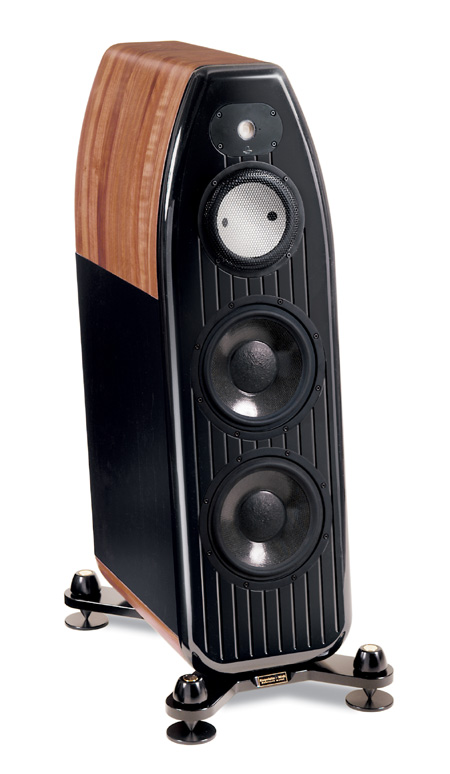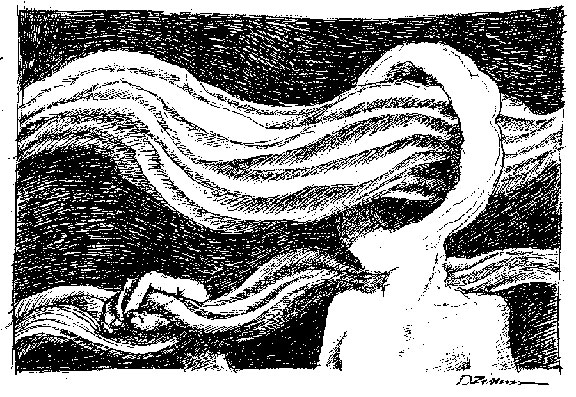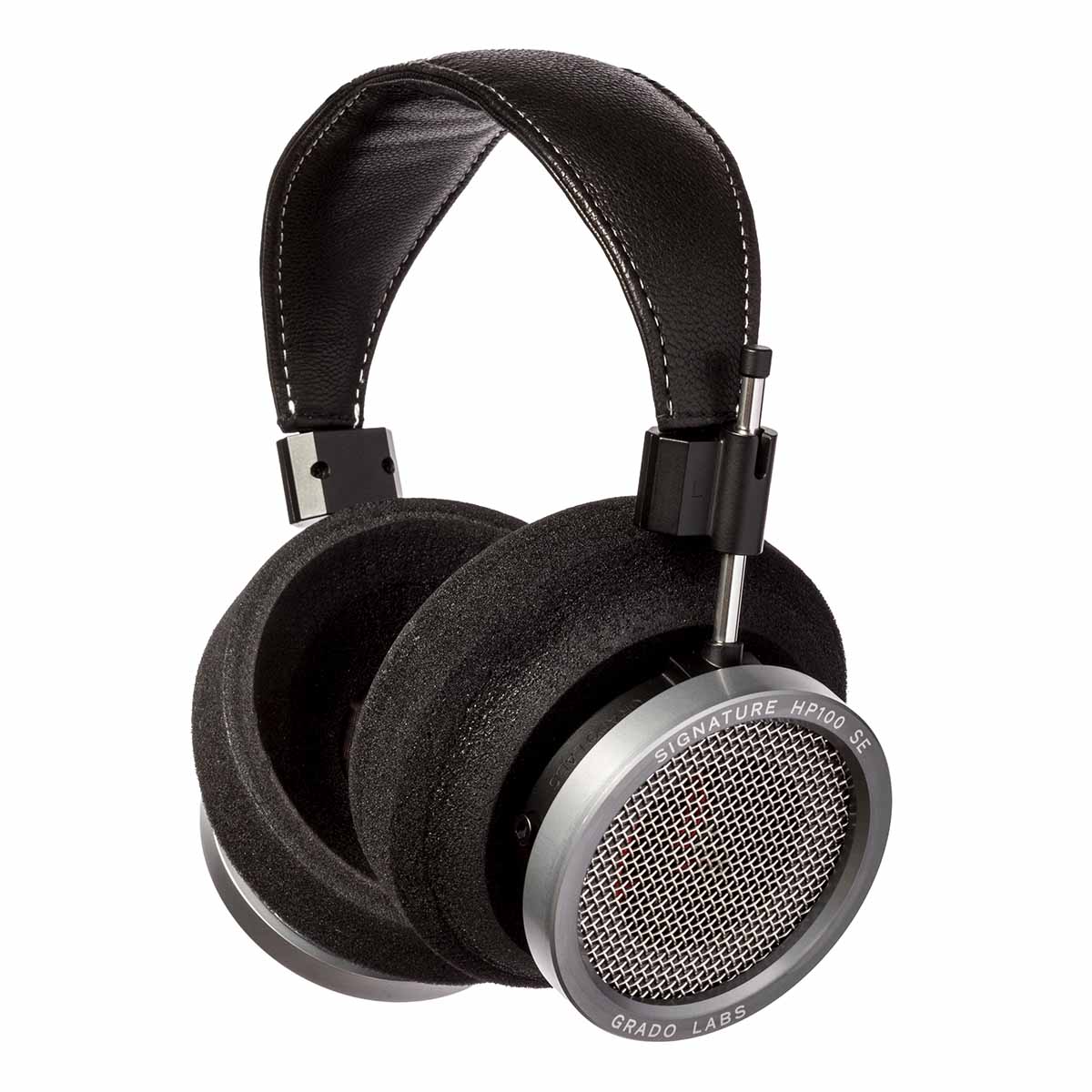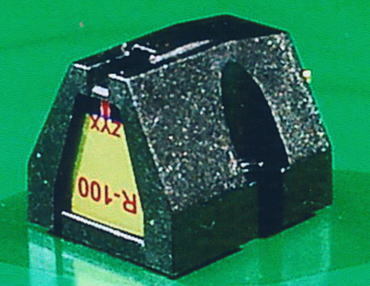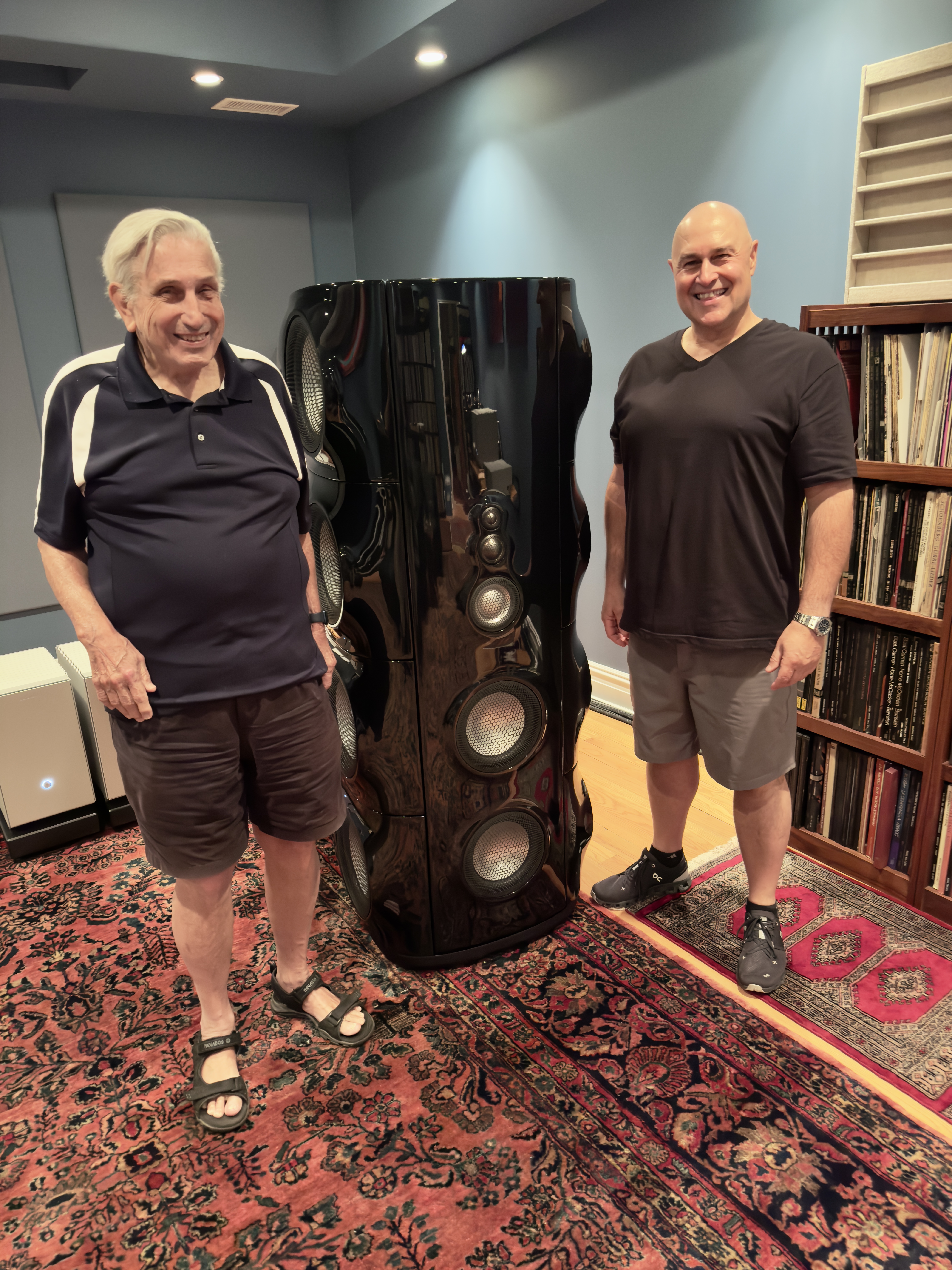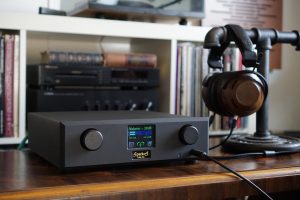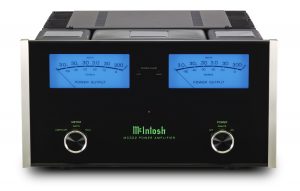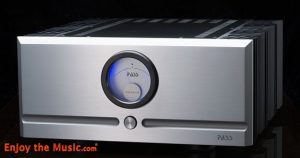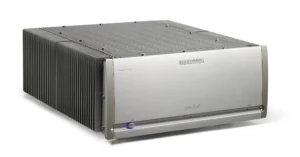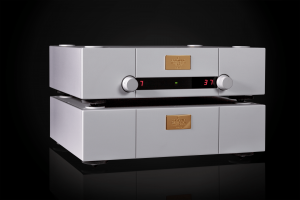This article by Gary Beard originally ran in Issue 5, February/March 2003, so while we call this section "New Old Stock - Articles from Our Days in Print" you are also going to see some articles from our early days of going online.
A Lighthearted Look at the Lightweight ChAMP of the World: The Zero-Hysteresis ZH270 amplifier
My first brush with a David Berning product came in the form of a little blue box called the Micro ZOTL. Primarily a headphone amp, it is little known outside headphone circles. I have an old pair of Signet headphones that the little Micro drove like crazy. I loved the sound, but after only a week, ear pain became a constant enemy. I reluctantly sold the amp to a very good home where she has lots of 'phones to drive. Having just sold my VAC Renaissance 30/30, and unable to shake the thought of the MicroZ otl sound, I surfed over to the David Berning Company website to check out his other products and immediately became interested in the ZH270, a 70-watt all-tube amp the size of a large shoebox, which, I believed, could drive my 87dB/8 ohm speakers without breaking a sweat. Upon inquiry, it didn't take long for Berning owners to relate their experiences with the ZH270. Berning owners are a loyal bunch, and are not beyond a little cheerleading. I was quickly convinced that the ZH270 could be my ticket to audio nirvana, so I ordered one, sight unseen. I was lucky, as David Berning—who builds these amps one at a time, using mysterious and technically advanced methods taught to him by Extra-Transistorals—had just finished building one. (Say what? Of course, I'm pulling your leg. Mr. Berning hasn't seen an ET, lately....)
With several reviews by legendary audio journalists already available, you may wonder why I've chosen to review the ZH270. The reasons are twofold. First, Berning products are not well known to the average audiophile. Also, as a new reviewer, there is no substitute for the experience of putting what I hear into words, and a solidly built, yet exotic component like the Berning is the perfect opportunity. The second and most important reason has to do with the current buzz on the Internet. If you regularly visit Audiogon or Audio Asylum, you have undoubtedly read about this amplifier. Prior to the Internet, if you didn't subscribe to audio magazines, the chances of hearing about a component like the Berning were slim. Now, all that has changed, and due to the information superhighway, I went from listening to a Yamaha HT receiver to owning an amplifier as scarce as cheap property in Hawaii in four short years.
David Berning has hand built over 1300 pieces of audio gear over the past thirty years. That's a lot of work for one individual, even a dedicated one, yet it means that Berning's products are some of the rarest around. Not only that, these creations are truly innovative. Billed as a zero-hysteresis amplifier, the ZH270 eschews the conventional output transformer for a design patented by Berning. The following description of this technology is from the Berning website:
The ZH270 uses radio-frequency to change the voltage-current transfer characteristics of the output tubes from their normal impedance-plane to one suitable for driving a speaker. The radio frequency impedance conversion is implemented using special high-frequency power-conversion techniques. The high-voltage, low-current tube impedance-plane is changed to the high-current, low-voltage speaker impedance-plane through special transformers at a constant carrier frequency. Because the audio signal is riding on a carrier, it is not subject to the parasitic elements of the transformer that would otherwise distort the audio signal. There is no low-frequency limit for this impedance conversion, and the ZH270 is dc-coupled, with the exception of a small, high-quality, dc-blocking capacitor at the input of the amplifier.
The impedance matching in the ZH270 is precisely determined by the effective turns-ratio of the RF conversion transformers. Both the push and pull portions of the amplifier are handled in a symmetric fashion, as they are in conventional transformer-coupled amplifiers, and negative feedback is not required to balance the positive and negative drive to the speaker. The impedance matching ratio is 16 k ohms plate-to-plate into 4 ohms, or 32 k ohms plate-to-plate into 8 ohms in the ZH270. These unusually large transformation ratios are possible because there are no limits imposed by parasitics present in audio-output transformers. The large ratios offer advantages of higher current delivery to the speaker, higher tube efficiency, reduced speaker loading of the output tubes, and low reflected plate resistance. Like other Berning amplifiers, the ZH270 uses a special triode-connected screen-drive arrangement that offers greatly enhanced reliability and also improved linearity at low idle currents.
If you wish to know more about the technology behind this amp, read the white papers at the David Berning Company website (www.davidberning.com). Otherwise, this is where we leave the engineering to the scientists and proceed with the fun stuff. What does all of this unique technology mean to those of us who don't know a slide rule from a protractor? It means we no longer have to break our backs wrestling a heavy chunk of iron onto our audio racks, and it transforms (no pun intended) this miniscule ten-pounder into a kick-silicon-in-your-face, 70 watt push-pull tube amp. Way cool!
The Learning Curve Reappears
When the ZH270 arrived, I opened the lightweight cardboard container to unveil a small, unassuming black box surrounded by foam packing. I couldn't imagine that this mini-amp was going to replace my monstrous VAC. Placing the amp in my rack and connecting it to my speakers revealed the only complaints I have about the ZH270, all related to its size and weight. The power cord connector, speaker terminals, and two sets of RCA inputs are very close together. Connecting my Cardas Neutral Reference speaker cables to the vertically arranged speaker binding posts was a particular challenge, and it took quite a lot of manual dexterity to position them so that they would not interfere with the inputs or make contact with each other. The amp is so light that heavy power cords, speaker cables, and interconnects can cause it to slide around, so you may need someone to hold the amp while you are making connections. Other than those minor gripes, the amp has worked flawlessly.
The ZH270 is a tour-de-force with respect to operation and internal protection circuitry. It uses two 6JN6 tubes per channel for power output and two 12AT7s and one 12AV7 tubes per channel for input and driver duties. Per the manual, the power tubes could last as long as 20,000 hours, driven gently. The amp has auto-biasing and error sensing circuits galore, brownout protection, and a four-stage power line filter/surge suppressor. If it had a kitchen sink it would be the greatest invention of modern times. Okay, that may be a little overblown, but ownership is as simple as one-two-three, as long as you…
READ ALL INSTRUCTIONS CAREFULLY
This amp is deceptively simple, perhaps too much so for a simpleton like me. A power switch, an A and B line-level input selector, a three position (low, medium, and high) feedback selector, along with a single stereo volume potentiometer—all mounted on the front panel—are the only controls.
Initially, wanting a more "open and resonant" sound (per the manual), I put the feedback switch in "ow" (3db) and turned the ZH's volume control all the way up so I could control the volume from my preamp. I couldn't believe my ears. The sound was closed in, noisy, and just plain horrific. I was in panic mode, so I quickly emailed David Berning. Assuming I had read the manual, his calm response indicated two things that might have caused my reaction—cable synergy and getting used to a sound completely dissimilar to the 300B syrup of the VAC. I calmed myself with thoughts of the break-in to come, but come it didn't. After a couple of days I was ready to send the amp back and request a refund, thinking that there had to be something wrong with it. However, due to reports of greatness from other owners, and my conversations with Berning, I decided to stick with it. While the sound did seem to get a little better with break-in, it was not until I tried the high feedback (12db) position that I heard the "real" ZH270. In high mode, the sound was glorious, yet became progressively worse in medium and low. In an effort to discover why this might be so, I re-read the manual and discovered, to my chagrin, that when used with a preamp, the volume setting is to be varied in relation to the selected feedback position. Once the volume control had been properly positioned, the damn thing sounded like the proverbial veil had been lifted. In fact, it sounded like Salome had just performed the entire dance of the seven veils right between the speakers. Nice imaging!
Where Music Lives
Having grown up with one of the world's great music schools in my backyard, I am fortunate to have heard a fair amount of live music. All types of music–hard rock, jazz, classical, and unique stuff like early music ensembles and classical saxophone—all played by world-class musicians. I think this experience really helps when trying to decipher the sound of audio components. I am not trying to say that the ZH270 sounds like live music, but rather that many of the important elements needed to recreate a live performance can be heard in Berning designs. First and foremost, this amp is musical. It draws you into the music and makes it difficult to tear apart the sound in the typical audiophile way. It does not seem to have a confining musical signature to which one can constantly point. Unlike the VAC, which was seductively rich and beautiful no matter the source, the ZH acts like a mirror of the original, yet does so with a purity of tone and grainless-ness that won't leave your ears scarred from a near-death experience if the source is less than perfect.
Some early reviewers heard leanness in the upper bass frequencies. In my system, using the low feedback setting, I have never felt the amp to be deficient in this area, yet acknowledge that others could hear it as such. I prefer to think of the ZH as neutral, yet it has the natural warmth that gives music emotion and the illusion of reality. All of my gear has been selected with these two attributes in mind, so it is the perfect complement to the rest of my system. As other reviewers have noted, the feedback settings change the sound of the amp from a more highly damped and extended sound (high) to a more open and laid back presentation (low). Don't let this statement confuse you. This amp never has the coolness of a solid state amp, or the warm coloration of 300B tubes. The feedback options are more a matter of personal taste and to help with matching the damping characteristics of various speakers. I use all three settings, but have settled on "low" as my favorite with most music.
The Berning showcases the beautiful tone and timbre of instruments and voices. It is exceptionally clear, and has excellent inner resolution. When you least expect, it will thump you in the chest with deep tuneful bass, serenade you with a beautiful midband, and give you chills with exquisitely delicate treble. The attack and decay of notes are excellent, and the amp's speed and ability to present dynamic contrasts can be startling. All the airy images and soundstaging that I've come to expect of a first rate amplifier are present in spades. All these audiophile qualities add up to an amplifier that is wonderfully musical and engaging.
One of my favorite recordings to use as a reviewing tool is the Roger Waters CD, Amused to Death. The Q-Sound effects are so spectacular and the music swirls and envelops in such manner that you'd swear it was multi-channel. That is exactly the result achieved by my system when driven by the ZH. One of my latest faves, The Chieftains' wonderful compote of Irish and American roots music, Down the Old Plank Road—The Nashville Sessions, shows off the Berning's ability to reproduce the recording space. The jam session finale evokes feelings of Friday night at the local pub, as each player takes his turn at the mic. Kevin Conneff's bodhran is so palpable; you can reach out and touch it. I had to pour a Guiness just to keep up.
Because the ZH has a built-in volume control, I experimented with driving it directly, with both my Cary 303-200 CD player and my Wright Sound WPP100C phono stage. The results left me in somewhat of a conundrum. When my First Sound preamp was in the chain, the sound seemed more dynamic. Was it subjectively more dynamic? David Berning used this phrase, observing that an added component may seem "subjectively more dynamic" due to its stripping the signal of high-frequency trash that allows higher volume listening with less listener fatigue. The unwanted side effect is that some of the musical signal could be stripped as well. With the preamp, the staging is very wide and layered from front to back. Each musician's space is clearly delineated and the images are somewhat small. It is a more mid-hall perspective, yet seems strangely close at the same time. When driving the amp directly, I first heard an increase in texture, a little softening of the lowest octaves, and what seemed to be a less transparent sound. I was a bit perplexed by this, having presumed that greater transparency would be the outcome.
Over a period of weeks I went back and forth with this experiment, only to note the same results each time. Then it hit me—my preamp inverts absolute phase! In my haste to swap interconnects for an A/B comparison, I had never swapped speaker leads. After I did so, the conundrum began. Purity of tone, treble extension, palpability, resolution, and transparency, all seemed to improve at least a smidgen in the direct mode. I was now in the first row, and images were bigger, yet a little more diffuse. The sound was captivating, but with the additional resolution and detail, there was also an increase in the dreaded high-frequency trash. No matter whether it was CD or LP—all was laid bare, and while the sound was still smooth and grainless, recordings with brightness in the upper midrange/lower treble regions were not treated as lovingly as with the preamp.
After I reinserted the First Sound, I again noted a slightly more dynamic presentation, more tonal color, and perhaps a bit deeper bass response. On the whole, there was less "directness," and while the sound was still excellent, it was not quite as transparent. Images were not nearly as small (in comparison to the amp alone) as I first believed. This perception seemed to stem from the amp's slightly less defined staging, which projects further forward in front of the speaker plain, whereas the preamp's stage begins at the speakers and has more overall depth. I love my First Sound, and it has been the cornerstone of my system. Whether it be subjective or not, I hear improved dynamics with it in the chain. The differences are a matter of personal taste. I'm not sure I want to give up the control and flexibility my preamp offers, and although it looks through a different window, it is no less engaging. The jury is deliberating.
The Humble Opinions of a Simpleton
"Visceral, delicate, beautiful, rhythmic, dynamic, in a word, incredible" were the descriptors I used in an email sent to another Berning owner shortly after my first taste of the sound of the ZH270. Today I would add "lightning fast, extended, and musical." In the high-priced world of audio, I believe the Berning ZH270 is a great value. It is a unique product, built by a designer dedicated to finding new and better ways to reproduce sound, and yet, unlike so many other "new and different" components, it is one that fits within the real world. The Berning ZH270 offers small size, simple operation, reasonable upkeep costs, and great sound. Much time has passed since I first heard the ZH270. I still think it sounds incredible. My thanks to David Berning for pushing the envelope. I am glad I took the chance to beam up to the mothership.
ZH270
Retail: $4500
David Berning Co.
301. 926. 3371





